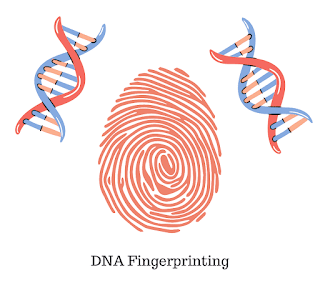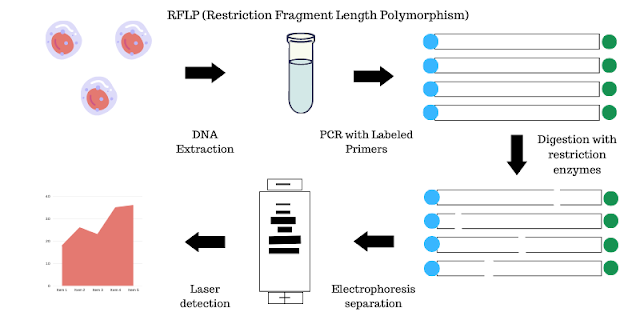DNA Fingerprinting: Definition, Method and Application
What is DNA fingerprinting?
DNA fingerprinting is a laboratory technique that is used to determine the identity of a person using a unique pattern in the minisatellites of the genome of an individual.
It was first invented in 1984 by Sir Akec Jeffreys after he realized that we can detect variations in human DNA based on these minisatellites. On average, about 99.9% of DNA between two individuals is the same, the remaining 0.1 % makes the person unique.
DNA profiling, DNA testing, DNA examination, Genetic profiling, and Genetic fingerprinting are branches of DNA fingerprinting. Following is the complete process of DNA fingerprinting:
RFLP (Restriction Fragment Length Polymorphism)
The first step of DNA fingerprinting is to extract DNA from the biological fluid of human-like blood, buccal swabs, etc.
Then molecular scissors, also called restriction enzymes are used to cut the DNA into thousand pieces of different lengths.
These pieces of DNA are now separated using gel electrophoresis in which the fragments of DNA are separated by applying an electric current across the agarose gel through larger pieces of DNA.
Once DNA fragments are separated, the DNA pieces are transferred to a robust piece of nylon membrane and then 'unzipped' to produce single strands of DNA.
Now, the nylon membrane is incubated with radioactive probes. These probes only attach to the pieces of DNA that are complementary to each other. In our case, they attach to these minisatellites in the genome.
The minisatellites that are probes have been attached now visualized by exposing the nylon membrane to X-ray film.
A pattern of 30 dark bands appeared in the film. This pattern is our DNA fingerprint.
Application of DNA fingerprinting
- It helps to link a suspect with the scene of the crime by doing DNA fingerprinting on the biological samples like blood, semen, hair, etc found on the scene of the crime.
- DNA fingerprinting help in paternity testing as the offspring get half DNA from the mother and half from the father.
- It helps to identify victims of natural disasters and helps to bring separated families back together.
- It helps biologists to protect endangered species.
- In U.S. armed forces, a program is there to collect DNA fingerprints from all personnel and use them later in case they are needed to identify causalities or persons missing in action.
- By studying DNA fingerprints we can have a history of some particular disease and disorder.



